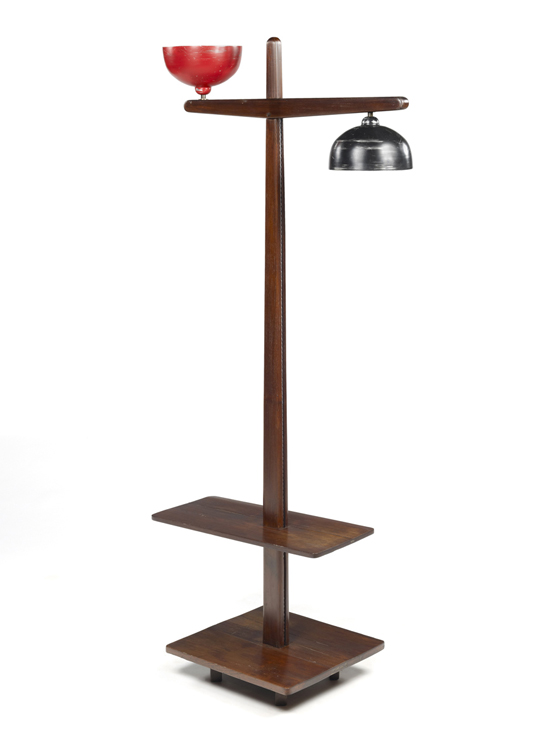Furnishing the Future: Le Corbusier and Pierre Jeanneret's Chandigarh furniture
Texto por Simon Keane-Cowell
Zürich, Suiza
05.09.11
Having received the brief to plan and design a new state capital for the Punjab, Le Corbusier, true to form, delivered a striking urban entity that's a veritable 'Gesamtkunstwerk'. A forthcoming exhibition at the Galerie Anton Meier in Geneva of the Swiss architect and Pierre Jeanneret's furniture for India's first postcolonial city demonstrates neatly the level of consideration given to the shaping this modernist gem.
Le Corbusier and Pierre Jeanneret on Chandigarh's Lake Shukna in a pedal boat designed by Jeanneret, c. 1950; photo Sureh Sharma
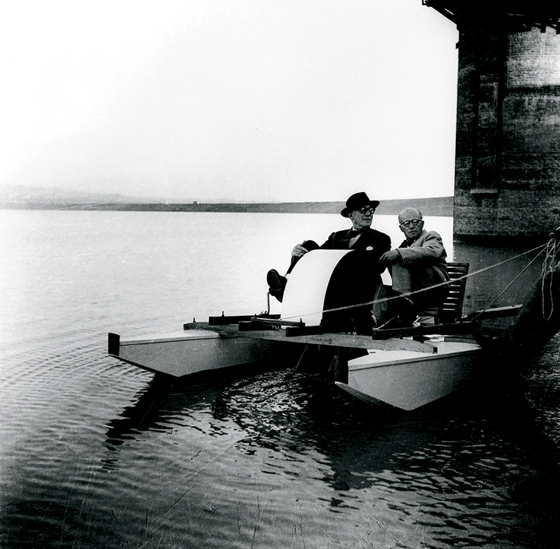
Le Corbusier and Pierre Jeanneret on Chandigarh's Lake Shukna in a pedal boat designed by Jeanneret, c. 1950; photo Sureh Sharma
×As popular uprisings take place across the Arab world, the question, in the case of those that are successful, of how to fashion a new political system and society is a pressing one. It remains to be seen what the long-term effects, both nationally and internationally, will be of the revolutionary series of protests, what will come to occupy the space those displaced regimes once inhabited, but history has demonstrated that one of the perennially favoured ways of signalling a radical recasting of a country's collective identity is through planning and architecture. Nothing says new era as much as some impressive new public building.
Pierre Jeanneret, 'Judge Chair', c. 1960, solid teak and leather; photo courtesy Galerie Anton Meier
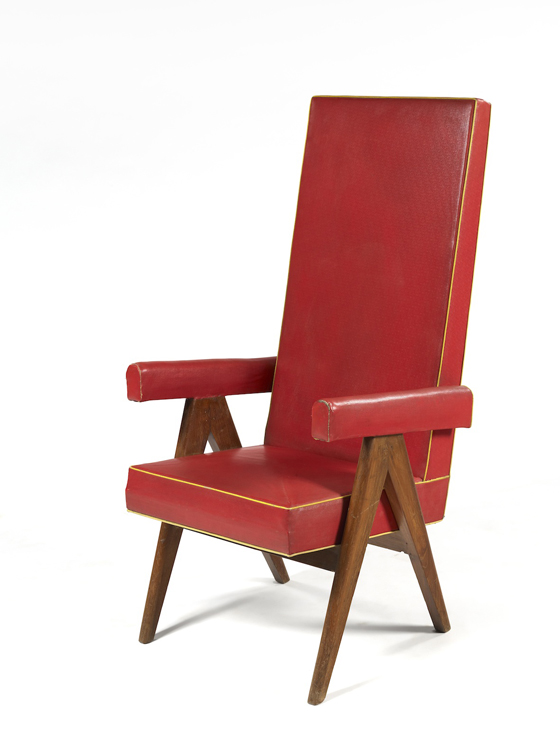
Pierre Jeanneret, 'Judge Chair', c. 1960, solid teak and leather; photo courtesy Galerie Anton Meier
×In the case of the Punjab, the northern state that saw itself carved in two in 1947 when British India underwent a brutal partition into the modern nation-states of India and Pakistan, this meant the creation of an entirely new state capital on the Indian side of the border. (Lahore, the former first city of the Punjab, ended up in the Pakistan.)
Pierre Jeanneret, 'Standard Lamp', c. 1955/5; photo courtesy Galerie Anton Meier
After the initial involvement of American architects Albert Mayer and Matthew Nowicki, the country's prime minister Jawaharlal Nehru invited grand master Le Corbusier at the start of the 1950s to produce a plan for the city, which would embody those progressive planning principles the Swiss creative had been expounding for decades via his writings and through the Congrès International d'Architecture Moderne.
Pierre Jeanneret, 'Caned Fireside Chair', c. 1960, solid teak and canning; photo courtesy Galerie Anton Meier
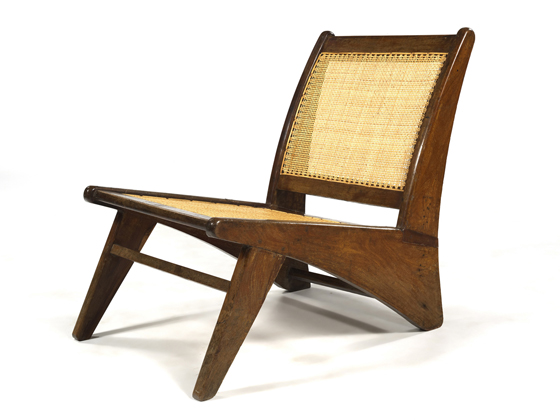
Pierre Jeanneret, 'Caned Fireside Chair', c. 1960, solid teak and canning; photo courtesy Galerie Anton Meier
×The result was a new urban entity, characterised, Corbu-style, by a strict zoning: devised according to a metaphoric-anthropomorphic plan, the northern part of the city, with its executive and legislative buildings, functions as the 'head', the 'heart' operates as Chandigarh's commercial centre, while academic and leisure facilities are located in the city's 'arms'.
Le Corbusier, 'Ministers' Table/Desk', c. 1958/9, solid wood with Indian rosewood veneer; photo courtesy Galerie Anton Meier
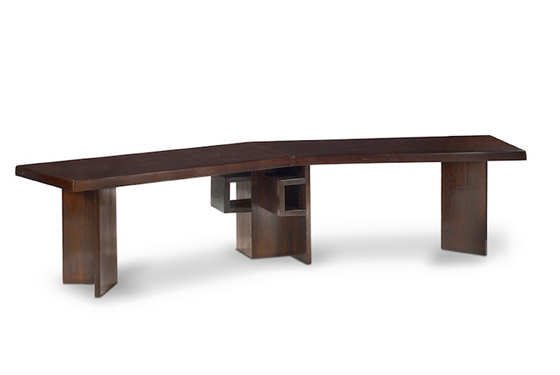
Le Corbusier, 'Ministers' Table/Desk', c. 1958/9, solid wood with Indian rosewood veneer; photo courtesy Galerie Anton Meier
×With their emphatic and sculptural use of concrete, and their resolutely contemporary forms, Le Corbusier's key structures within this new urban context served as expressions not only of the confidence and forward-looking nature of the new Punjabi state, but, perhaps more importantly, as key rhetorical devices in the vitally important postcolonial discourse of nation-building. Chandigarh, as a regional capital, was always going to have a multivalence, acting at the same time as a micro-vision of India as a whole as a modern nation.
Le Corbusier / Pierre Jeanneret, 'Armchairs', c. 1955/6; photo courtesy Galerie Anton Meier
While critical commentary on Chandigarh has to date mostly focused on its landmark architecture, a forthcoming exhibition of some of Le Corbusier and Pierre Jeanneret's furniture for the city's public buildings acts as corrective to this, foregrounding as it does the role design played in casting Chandigarh as an urban expression of modern India.
Le Corbusier-designed manhole cover for the city of Chandigarh, proudly depicting the new city's grid layout, c. 1951/4, cast iron; photo courtesy Galerie Anton Meier
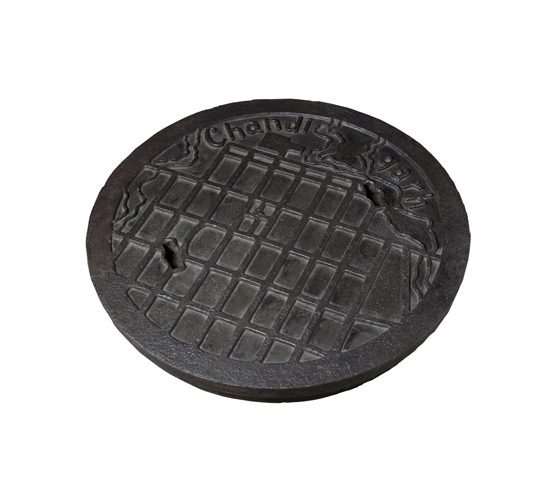
Le Corbusier-designed manhole cover for the city of Chandigarh, proudly depicting the new city's grid layout, c. 1951/4, cast iron; photo courtesy Galerie Anton Meier
×Operating as part of the 'Gesamtkunstwerk' that was the new state capital – which included such details as bus stops and manhole covers – the chairs, desks and other pieces, which will be shown at Galerie Anton Meier in Geneva next month, combine a modernist aesthetic with local Indian craftsmanship and materials. Solid teak and rosewood is married with leather for some of the designs to suggest solidity and, to a certain extent, luxury. (The leather was taken from already-deceased cows, so as not to offend Sikh and Hindu tradition.) Bamboo, iron and cotton feature in other, more prosaic pieces.
Le Corbusier and Pierre Jeanneret's furniture for Chandigarh in situ; courtesy Galerie Anton Meier
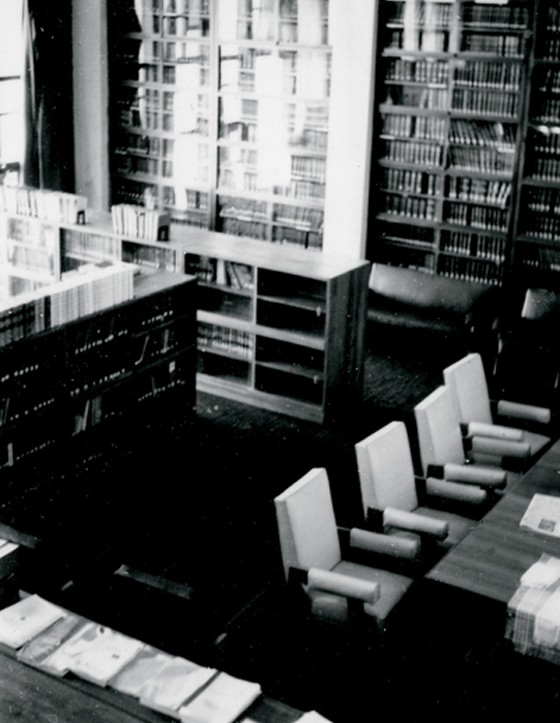
Le Corbusier and Pierre Jeanneret's furniture for Chandigarh in situ; courtesy Galerie Anton Meier
×In spite of the 'exotic' nature of some of the materials used, the modernist emphasis on the utilitarian is never far off. V-shaped legs on a number of chairs recalls the functional forms of trestles from draftsmen's tables, while office desks feature cubby-holes for storage. And all the while, the geometry of the work serves to underscore the highly rational layout of the city. The Punjab may have been divided, but Chandigarh doesn't do things by halves.
...
Le Corbusier & Pierre Jeanneret: The Chandigarh Project
20 September to 29 October, 2011
Galerie Anton Meier
Palais de l'Athénée
2, rue de l'Athénée
Geneva 1205
Switzerland
anton.meier@span.ch
www.antonmeier-galerie.ch
...


